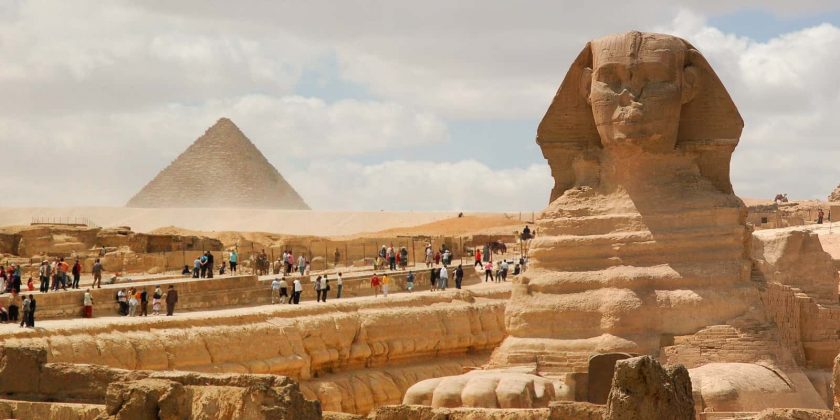Historically, thoughts of Egypt conjure up images of the Ancient World – from the Pharaohs and pyramids, to the north-flowing Nile. The allure is securely steeped in its rich culture and history. It’s the reason why, for decades, thousands have trekked to the North African country. It’s also why Lonely Planet included it in their list of where to sail into the sunset, or why 5 of its hotels made the list of Condé Nast’s Top 15 Hotels in Africa.
Did that all change two years ago, on January 25 2011, the day thousands took to the streets in protest to successfully oust president Hosni Mubarak?


The monumental Temple of Hatshepsut still stands, so too the The Luxor Temple on the east bank of the River Nile that was founded in 1400 BC. You’ll still find the Great Sphinx at the Giza Plateau, and the majestic Great Pyramid of Giza, the only remaining original Seven Wonders of the World. Add to that the pristine beaches, and award-winning Red Sea diving and snorkeling spots. None of that has changed. But the number of tourists? Sadly, that has.
Foreigners Fled, Along With Revenue
The impact was immediate. With the threat of political instability and fear for personal safety, many of those who were there fled, and some of those who had planned to come spent their holiday elsewhere. The country took a hard knock, with the tourism industry playing such a vital part in their economy as a vital source of income (at least 10 percent) and as an important source of jobs. Egypt suffered a 35 percent drop in tourist arrivals in the months after the uprising, reported statistic agency, CAPMAS. At the time, some government officials tried to downplay the impact the uprisings would have, but a spokesperson for the country’s tourism ministry later admitted “the effects have been drastic” – as drastic as losing $1billion a month according to some reports.

Re-Building Ancient Egypt in Modern Times
The tide, though, is slowly changing. In 2010, pre-revolution, Egypt welcomed around 14.5 million tourists. They earned revenue that was said to account for more than 10 percent of the country’s economic activity, making it the second larges source of revenue after remittances. In 2011, that figure reportedly dropped to under 10 million foreign visitors. But there’s signs of a steady recovery. Speaking in Cairo in January, Egypt’s Tourism Minister Hisham Zaazou said that a 17 percent rise in tourists was recorded in 2012, coupled with a 13 percent increase in income generated. Zaazou remains hopeful. “We did better than anyone expected despite the problems we had”, he told Reuters. The figures still however represent a more than 20 percent decrease in tourists over the past two years.

It’s significant numbers, but what it also tells us is that people are still going to Egypt. They must feel safe enough to. They’re the ones who are partly responsible for the fact Cairo hotels recently posted their highest profits. Or why Sharm el Sheikh registered their highest hotel occupancy since the uprisings (according to a survey by hotel industry experts TRI Hospitality Consulting). It’s hoped that visitor figures will return to 2010 levels by the end of 2013 as the country tries to rebuild its image and promote tourism. Is it a realistic target? It all of course depends on political stability that will help foreigners feel safe enough to go there. It would be a shame if it didn’t happen soon. A shame for those living there, for those who depend on the industry for their livelihood and for those wanting to see the many treasures Egypt holds.
